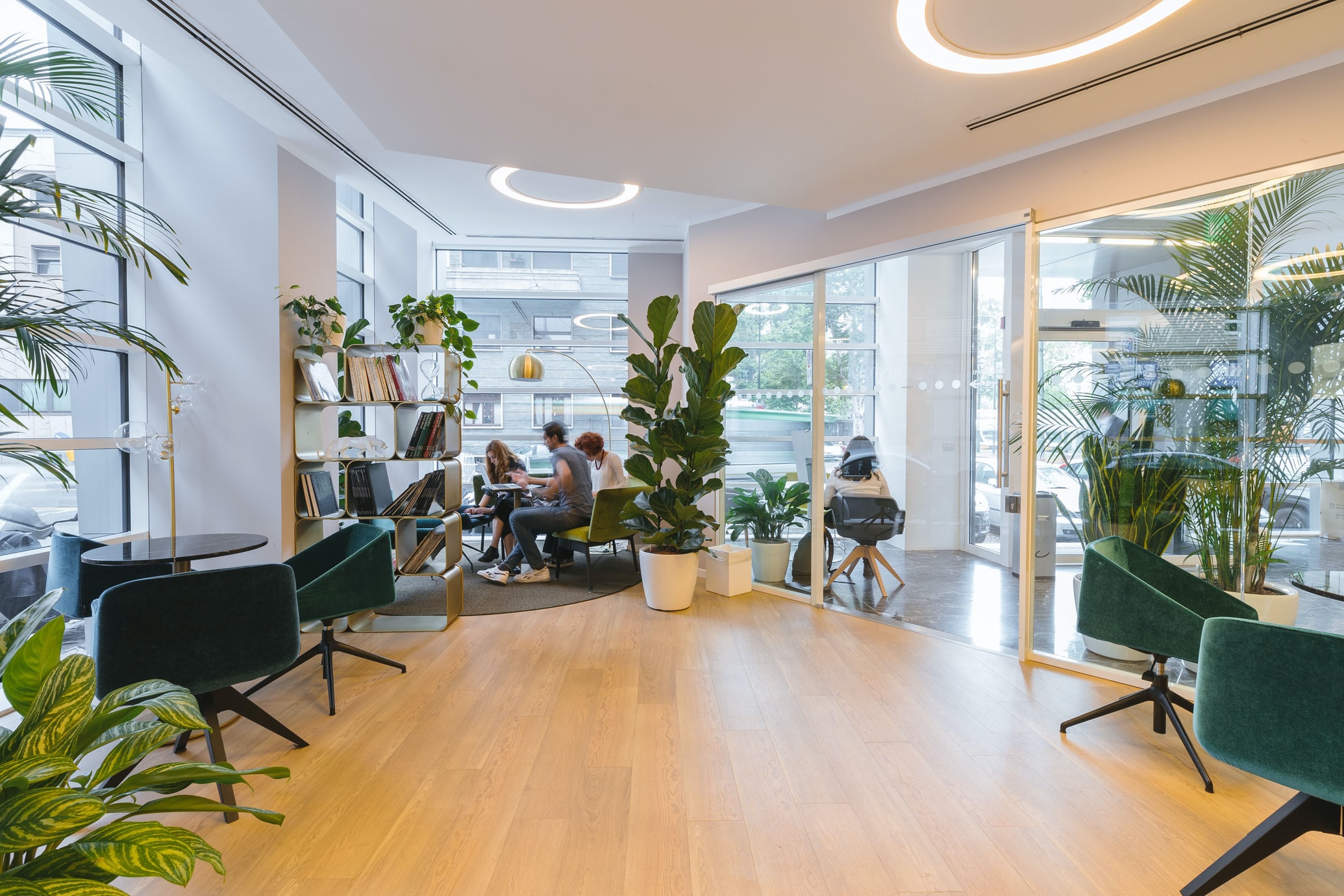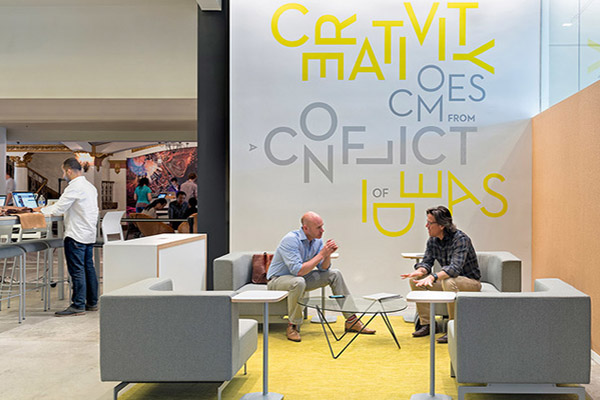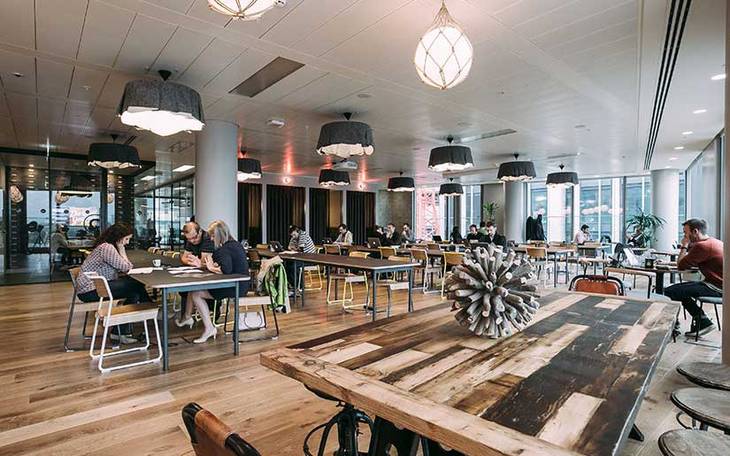
Flexible workspace market: The future of the industry

Now, when we are still fighting for normal life during the COVID-19 pandemic, one of the main issues to be concerned about in the business world is what is waiting for the flexible office space market. What’s the point of the flexible office in general? How is the industry going to change in case there will be any changes at all? The pandemic has taught us all to re-think and re-plan the way we live and work, as well as to adapt fastly to the established rules and regulations. Yet, when we speak about the office industry in general, and the office rental, in particular, we still need to understand that the workspace has a central role to play in organizing schedules, hosting business meetings, growing teams, etc. Before we start discussing and analyzing the possible ways of the development of the flexible workspace industry, let’s figure out what kind of office we are talking about, and how it has changed in the course of years.
What is flexible office space?
Flexible workspace is the term, which is used to describe an office space that comes with several creative desk layouts - hot desks, open offices, fixed desks, etc. Flexible venues conform to the needs of whoever is utilizing them at any given time. It’s the workspace that is ready to support employees, ensuring them the way to perform tasks in the most convenient and efficient manner. Flexible office solutions require no setup costs. In fact, there is more to a flex office than just flexibility. Lots of facilities and services identify how adaptive and accommodative the venue can be. The list of amenities and features that influence the workspace’s flexibility includes furniture, technology, accessibility, and even design. Flexible workspace options make tenants more adaptable to the challenges any company inevitably faces: workplace costs, operational demands, worker support, etc. By choosing the flex workspace, you avoid the burden of setting up an office by yourself. Just come in, get comfortable, and concentrate on running your business. Apart from the facilities, it is the atmosphere that attracts tenants to choose the flex office space. Working in an environment that hosts a range of individuals, brands, and companies is a creative way of networking. Companies of various types and sizes use multiple ways to create flexibility for workers. To impress, attract, and draw tenants, they provide creative desking options, adaptable space structures, and contemporary, often home-like, workspace design. Currently, the flexible workspace market boasts a vast array of options, that can be tailored to the needs of solopreneurs and large enterprises alike.

Flexible office space in the USA | How large the flexible workspace industry is
The flex office space has been widely recognized as an established component of the CRE market of the USA. Once considered a niche offering, today the flexible working space has become a prominent element of the building owners’ and corporate occupiers’ real estate strategies. As such, it represents a structural shift in office leasing that will survive—and perhaps thrive—in an economic downturn. The concept of flexible workspace is evolving and includes a range of office solutions - coworking venues, private offices, virtual offices, meeting rooms, among others. These spaces often include numerous amenities ranging from Wi-Fi connectivity to coffee vending machines.
According to the data established by JLL, the flexible office space in the USA has been growing at an average annual rate of 23% since 2010. With that, the coworking sector has emerged as the primary growth driver within the office market. A massive amount of venture capital has been poured into this sector, thus, the growth rate doesn’t show signs of slowing down. Businesses are adopting flexible workplace models for the reasons like reduced occupancy costs, increased collaboration and agility, and the possibility of avoiding signing long-term leasing contracts. It’s also beneficial to the individual remote employee seeking space to work without the potential distractions or unreliable network of their homes.
By country, the USA tops the list for the amount of flexible office space. With 80 million square feet of flexible workspace, the country is considered a global leader in terms of coworking real estate. According to the Coworking Resources report, the US is still leading as the biggest market with over 3700 shared offices across the country, which constitutes 18,3% of the global share of coworking premises. New York is home to a large chunk of the flex office space options in the country and will likely continue to expand its reign considering it’s got the nation’s highest concentration of freelancers and small businesses, but the market will expand in the other areas as well.
Prior to the outburst of the pandemic, shared office spaces were the fastest-growing kids of premises in the CRE. While they currently comprise less than 5% of the market, they’re expected to make up 30% by 2030, according to the analysis established by JLL.

Going into the future
When the coworking movement was introduced as a working culture fifteen years ago, many people wondered whether it has the future. Originally, it catered to the needs of digital nomads, freelancers, start-ups, and personal entrepreneurs, but what started as an experimental movement has become an undermining industry and it seems that flexible workspaces are here to stay. As corporate occupancy strategies consistently call for more optionality and flexibility, the flex office space sector will continue to grow. For small, mid-sized, and large businesses agility will be the key for the nearest period of time. On a global scale, the flexible workspace industry is expected to have a bright future, reaching $13,03 billion by 2025.
The impact of the pandemic has been twofold. While the industry has definitely suffered from the negative impact of COVID-19, it has also created the twin demands of flexibility and “the human touch”. Covering both of these needs, coworking spaces are becoming fast-growing realities. Lots of companies and entrepreneurs are viewing flexible office space rental as the key element of their future business operations, and real estate strategies.
Now that millions of employees and entrepreneurs worldwide have proven the fact they can perform their work remotely, many experts agree that it will be a more common practice for people to split their working time between the home office and the dedicated workspace. At the same time, people wonder about how the modern office should look like. In order to draw and retain clients, flexible office providers will need to design premises according to the customer’s requirements, paying special attention to spacing and sanitation. By offering environments that are attuned to keeping members healthy and safe, flexible workspace providers have better chances to sign valuable leasing contracts with tenants. People will always need and will be looking for, a place to connect, find community, and find a purpose. That’s what has brought them to coworking offices initially, and that is what will make them return here.
With the adoption of remote work, many people have chosen to leave big cities in favor of small towns or suburban locations, that are more affordable. This tendency is going to prevail in the nearest future. Operators are expanding to the suburbs and covering more international markets. Thus, the market may become more volatile, with only the strongest commodity players surviving. The upcoming year is going to be characterized by a bigger share of flex working space available to corporations and, in general, a rapid shift of traditional office space to a flexible one.
A hybrid workspace gives the best sense of the future of the office
With the increasing deployment of vaccines, people can optimistically hope that they are at the beginning of the end of this troublesome period. Until it is truly safe for teams to gather in the workspace without restrictions, the concept of the workspace will be different. Increasingly, businesses will start utilizing hybrid models with staff working partially in person and partially from home. The opinions of the ideal workspace model range from company to company. However, the majority of executives believe that working three days a week in a flexible office space is an ideal hybrid workspace model.
The truth is, with so many factors up in the air, it is difficult to assess what the future of the flexible workspace industry holds. At least for now, it seems like a vivid fact that spending all the working time in the office and committing to the regular working schedules is already in the past. In the future, we’re likely to see some of the most important aspects of office culture return, combined with the continued success of remote working. It is also a crystal clear fact that the CRE market of the country is in the age of acceleration. Thus, it is incorporating flexibility into fundamentally linear asset classes. It makes a flexible office market a risk-averse solution for companies and enterprises looking for the appropriate office, especially in the period of recession.



